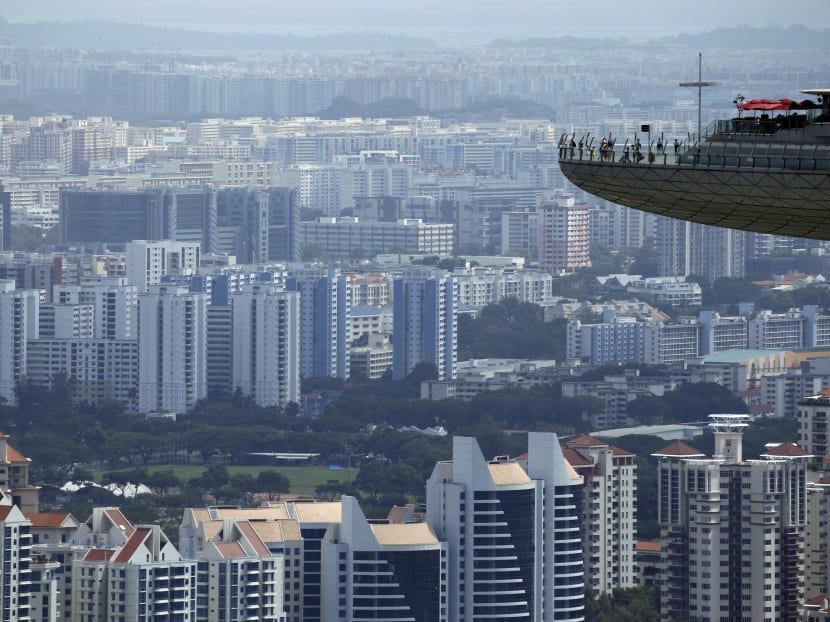Seller’s stamp duties cut as some property cooling measures eased
SINGAPORE — The Government will lower the holding period for those who want to sell a residential property from the current four years to three, the authorities announced on Friday (March 10).
SINGAPORE — The Government has reduced the stamp duties that sellers have to pay on residential properties and slightly relaxed rules on loan thresholds, more than three years after the last round of property cooling measures and borrowing curbs that helped send private housing prices falling for 13 straight quarters.
“The current set of property market measures remain necessary to promote a sustainable residential property market and financial prudence among households. However, we will make calibrated adjustments to the Seller’s Stamp Duty (SSD) and Total Debt Servicing Ratio (TDSR) framework,” the Ministry of National Development, the Ministry of Finance and the Monetary Authority of Singapore said in a joint statement on Friday (March 10).
Under the changes effective on Saturday, the SSD will be payable if a homeowner sells his property within three years of purchase, down from four years previously. The SSD rates will also be lowered by 4 percentage points for each tier – to 4 per cent for properties sold in the third year; 8 per cent for those sold in the second year; and 12 per cent for those sold within the first year. The new SSD rates will apply to homes purchased from Saturday onwards.
The SSD was first imposed in 2010 and quickly expanded in the same year and the following year as the authorities sought to temper red-hot buying sentiment that drove a sharp housing market rebound after the global financial crisis, as well as encourage prudence among home purchasers.
The rules on the TDSR framework, which requires financial institutions to ensure loans they make do not push the borrower’s debt servicing ratio above 60 per cent of their gross monthly income, will be adjusted further in a move that will help some homeowners looking to monetize their properties. The Government said on Friday it will no longer apply the TDSR framework to mortgage equity withdrawal loans with loan-to-value ratios of 50 per cent and below.
“Some borrowers have given feedback that the TDSR framework has limited their flexibility to monetise their properties in their retirement years, i.e. to borrow against the value of their properties to obtain additional cash. MAS will therefore relax the rules to meet such needs,” according to the joint statement.
The TDSR framework, which also includes applying an interest rate of 3.5 per cent when evaluating the housing loan amount, much higher than actual prevailing mortgage rates, was introduced in June 2013 and cited by many analysts as the main cause of the decline in private housing prices since the third quarter of that year. Last September, the MAS had refined the framework to allow all homeowners to be exempted from meeting the 60 per cent threshold when refinancing mortgages of the home they reside in, and also for investment properties subject to certain restrictions.
To promote a stable and sustainable property market and financial prudence among households, the Government said on Friday it would retain the current Additional Buyer Stamp Duty rates and loan-to-value limits. Singapore citizens do not have to pay ABSD on their first home purchase, but will be required to pay 7 per cent and 10 per cent rates on their second and subsequent purchases, respectively.
Permanent Residents pay 5 per cent ABSD on their first home and 10 per cent for subsequent purchases, while a single ABSD rate of 15 per cent applies to foreigners on all their purchases.
“Transaction volumes in the private residential property market remain healthy. There is firm demand for private housing, in part because of current low interest rates and continued income growth. While the growth in outstanding housing loans has moderated, it is prudent for households to further build up their financial buffers to protect against future interest rate increases or any losses in income,” the joint statement said.
Private home prices in Singapore softened in the last three months of 2016 to hit their lowest level in six years, as the longest falling streak on record was extended to 13 consecutive quarters. For the full year of 2016, prices fell 3.1 per cent, narrowing from the 3.7 per cent decrease in 2015. From the recent peak in the third quarter of 2013, prices have fallen 11.3 per cent, reflecting the sustained impact of the loan curbs and cooling measures.
However, this came after prices surged 62.2 per cent from the second quarter of 2009 to the second quarter of 2013 as the economy emerged from the global financial crisis.
CORRECTION: In an earlier version of this article, it was reported that the changes to the Seller’s Stamp Duty rates would kick in from March 10. This is inaccurate. The changes will be effective from March 11. We apologise for the error.










